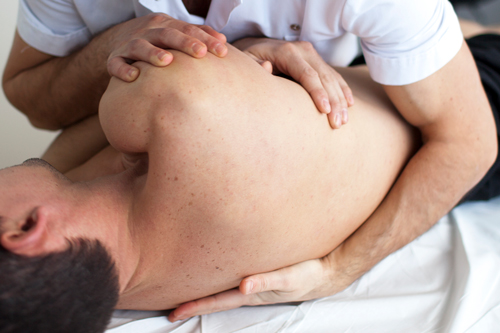
You had surgery to correct a problem in your shoulder, so it is a cruel stroke of irony to discover that the surgery has caused pain, stiffness, and arthritis to develop. In the past, shoulder surgeries, especially those like the Magnuson Stack or the Putti-Platt procedures, were designed to stabilize the repaired shoulder by limiting the patient’s range of motion. Unfortunately, the loss of external rotation can lead, in the long term, to the patient’s developing arthritis and, possibly, total replacement of the shoulder.
If you have experienced post-surgical symptoms of stiffness and pain in your shoulder (e.g., it has become increasingly difficult to raise your arms above your head), additional surgery may be necessary to manage the discomfort and inconvenience. However, some patients do fine with a therapeutic program of nonsteroidal anti-inflammatory drug pain relief (if your physician agrees), the application of heat/ice therapy and dietary supplements, such as glucosamine and chondroitin sulfate, integrated with a rehabilitation program. We can design a rehabilitation program that includes traction and targeted exercises performed for 10 to 15 minutes two or three times a day to improve shoulder motion and flexibility. Such exercises include:
- the pendulum swing whereby you bend forward at the waist and move your body (trunk) in a circular pattern while the extended arm moves passively clockwise and then counterclockwise 10 times each way three times a day
- the walk-up exercise that involves holding you elbow straight and using your fingers to “walk” the arm up a wall or door frame as high as possible, holding the pose for 10 seconds and then walking the fingers down for three repetitions three times each day
- specific strengthening exercises for the rotator cuff
Pain and stiffness after surgery are annoying and debilitating, and arthritis is a progressive, degenerative condition. Thus, it is important that we help you develop a plan of action to protect your shoulder from further damage, improve your range of motion, alleviate pain, and allow you to return to work and recreational activities more quickly and fully. We can assist you to fight back against post-surgical pain and gain better function of your shoulder-which is, of course, what you had surgery for in the first place.









